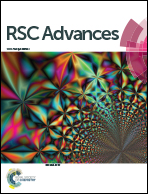CuSO4–d-glucose, an inexpensive and eco-efficient catalytic system: direct access to diverse quinolines through modified Friedländer approach involving SNAr/reduction/annulation cascade in one pot†
Abstract
A highly efficient and scalable multicomponent domino reaction for the synthesis of functionalized/annulated quinolines is devised directly from 2-bromoaromatic aldehydes/ketones in H2O–EtOH mixture for the first time. The key to this reaction is the use of an air-stable, eco-efficient and inexpensive CuSO4–D-glucose catalyst system, which is able to catalyze multiple transformations in one pot. The approach is carbon-economic and relies on sequential SNAr/reduction/Friedländer annulation steps, forming C–C and C–N bonds by cleavage of the Csp2–Br bond in a single synthetic operation. The reaction has a broad substrate scope and affords products in good to excellent yields.


 Please wait while we load your content...
Please wait while we load your content...